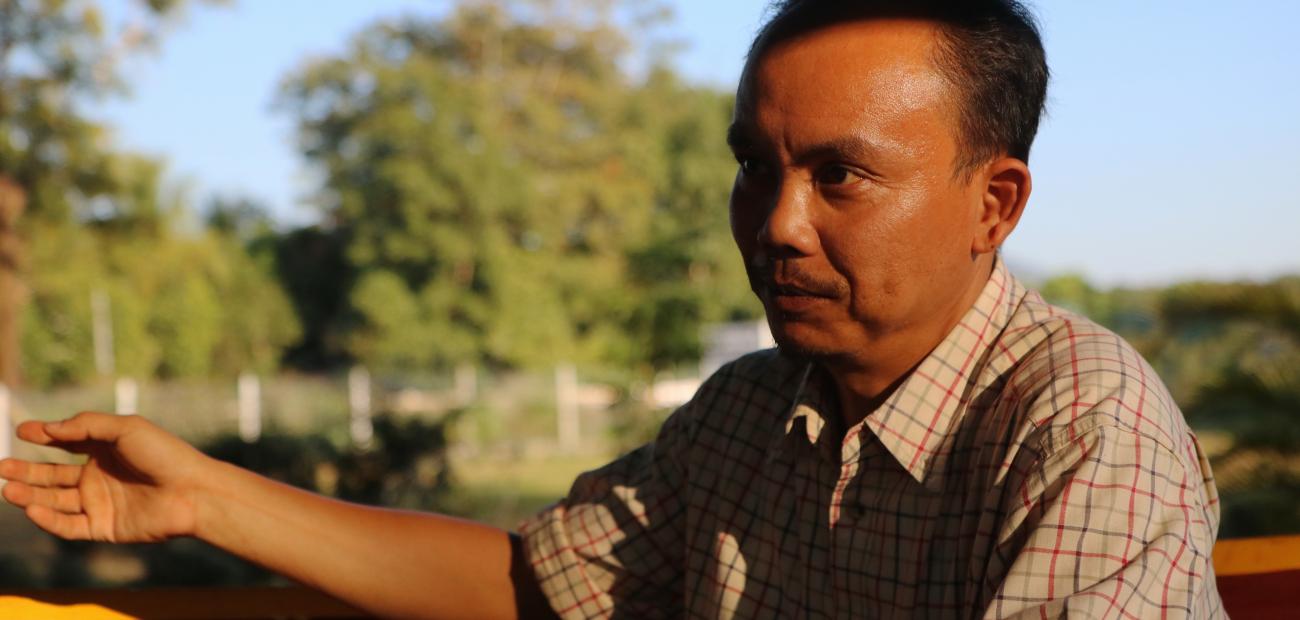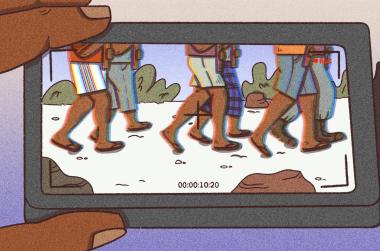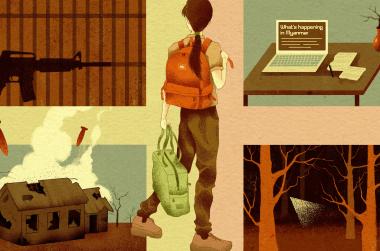The son of an ethnic Mon separatist-turned-smuggler who vanished in mysterious circumstances, Min Latt has spent a lifetime piecing together fragments from the stories of the dead.
Sitting in the shaded garden of his latest endeavour — Myanmar’s first modern museum to the infamous World War II “Death Railway” — the energetic politician says he wants to bring prosperity to his remote border town of Thanbyuzayat.
This corner of Mon state was isolated for decades under military rule and wracked by conflicts between the army and ethnic minority groups fighting for greater autonomy — a far cry from the Thai side of the border, which bustles with lucrative war tourism.
It’s a warm winter day and sightseers are posing for selfies outside the museum, strolling around the old black steam engine that has been fused to its tracks since the junta years, and past the vacant stares of models depicting Japanese soldiers and emaciated local workers arranged in positions of agonising toil.
The railway line -- designed to reinforce Japan’s invading army in what was then Burma -- was built by Allied prisoners and local conscripts in near-impossible conditions. In just over a year they hacked the 424-kilometre route out of solid rock and through mosquito-infested jungle, in tropical heat with only basic tools. By the time it was finished in December 1943, the construction had claimed the lives of an estimated 80,000 to 100,000 civilians from across Asia and 13,000 prisoners of war.
Min Latt says the site is an attempt to press home the devastation of war and uncover more information, particularly about local victims.
But it is the legacy of his own missing father that continues to haunt him.
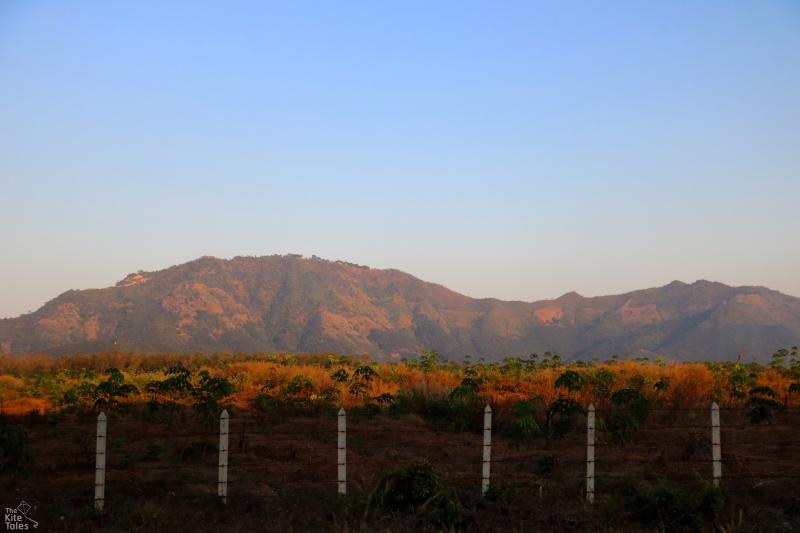
“I’ve always been aware of my father. He was quite artistic; he played the violin and wrote poetry. There were aspects of his character that were soft, but he was stubborn.
“Even though he’s no longer around, his friends still come and visit us. If I go back to the village, they will say: ‘Amoot was like this…’. That was his nickname because he had protruding eyes and that’s ‘moot’ in the Mon language.
“The reason he was forced to go underground was this: One day there was a Mon National Day celebration in the village and he raised the Mon flag higher than the Myanmar flag. That’s why people tried to arrest him and he joined the resistance. I wasn’t born then. It was all in his diary from 1971,” he said.
His father joined the New Mon State Party, which was waging an armed resistance to the Myanmar military government.
He married and made a life in the rugged territory on the border with Thailand controlled by the NMSP, but when his wife became pregnant with Min Latt and returned to their home village to give birth, he decided to risk following her to see his new baby son.
“There was fighting and he was arrested and sent to jail. By the time he was released I was almost at school,” says Min Latt ruefully.
His father appealed the 10 year prison sentence he was given for his links to the NMSP and it was reduced to a year. But he was determined to have the jail term quashed completely and in 1974 made a further plea to then-president Ne Win. This time his luck ran out. He lost the appeal and the authorities added two more years back onto his sentence.
After he was released Min Latt’s father lit upon a new profession, with the help of some contacts from his time in jail. He joined the crew of one of the black market boats that thrived in the government-imposed scarcity of Myanmar’s socialist era. The ships took rubber from Mon state to sell in Penang, Malaysia and brought back prized foreign supplies that were choked off by the military.
“They would only go out in the evenings when weather conditions were rough -- with forecasts of strong winds or storms -- because then the naval boats would not patrol.
“He disappeared on the third trip. In those days communication was really difficult, so they weren’t deemed to have died. But we still haven’t found the boat. There were a lot of pirates in those days too, so we don’t know whether the boat disappeared due to the weather or the pirates. Nobody knows.
“I do remember some things, like for example him bringing back toys and biscuits in tins. In those days, it was really something to be able to eat those biscuits from tins.”
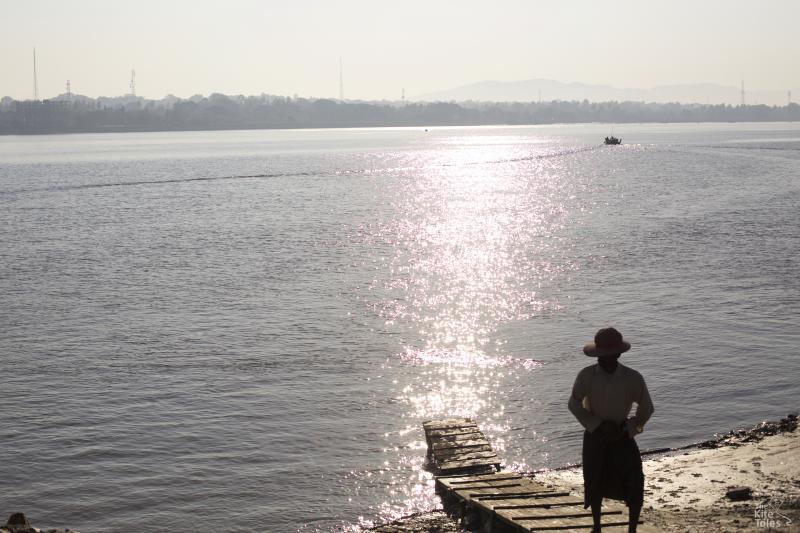
As he got older Min Latt became increasingly interested in politics.
“Maybe it was hereditary,” he says. “Mum arranged a bookshelf in my room with books my father left behind. I still remember to this day a picture in a magazine of Reagan and Thatcher during the Falklands War with soldiers. Both of them were very good-looking. I can still see that picture now.
“Because mum also went underground and had studied political science, she was able to tell me things, like issues of Mon nationalism and so on.
“She said: ‘If an armed group wasn’t able to hold on to a political ideology they soon become bandits. And in those days, communism was the only one they could latch on to. Because of the experience they had under the British, they couldn’t accept a market economy or democracy, so they chose communism.’
“Things have changed. I wasn’t keen to fight, so I chose to become an elected politician.”
In 2012, as Myanmar began to open the door to opposition voices in parliament, Min Latt was elected to be the head of the municipal government.
“You may ask why I didn’t choose to become an MP. My thinking is this: Since independence, the country has been ruled by the army or people linked to the army. We don’t have any experience of governing. So I thought that starting with the smallest unit of politics -- at the township level -- and gaining practical experience from there, would be a great learning opportunity.”

The Death Railway museum, which was developed with a private partner, has become his signature project.
Inside the compact, two-storey building are paintings, testimonials and a somewhat motley collection of images, some of which are snaps donated by Japanese war veterans to a previous museum set up under the junta.
“The number one aim of this museum is to show that war caused these horrors,” Min Latt says.
“The second aim is economic. In Thailand, they were able to earn significant income through this. The main economy of Thanbyuzayat is rubber but prices have fallen for five years. There are no alternative industries, so we thought this might create more employment.

“In Myanmar there isn’t a culture of visiting museums, so this is the biggest success.
“We have to make sure the museum is attractive. People like things to be ‘light’ these days. So we have a lot of space in the compound where they can take selfies, they can check-in, put pictures on Facebook,” he says.
But he acknowledges that there is more work to be done to bring the museum -- and historical research in general -- up to international standards.

The War Cemetery nearby has for years been kept pristine by the Commonwealth War Graves Commission, which has a vast database of information on Allied soldiers who perished in World War II. But little work has been done within Myanmar on tracing the local labourers who also died in the punishing conditions.
“I think we really need to work on a research archive in our country. For example, people say about 80,000 people died on our side. We don’t know where they are from or what they’re called.”
Myanmar was key battleground between the Allies and Japan during the ferocious last years of World War II, suffering tens of thousands of deaths and widespread destruction that was to haunt the country even in its post-war independence from British colonial rule.
It is a legacy that Min Latt has had to wrestle with as he strives to tell the story of this dark period of history.
“Our policy has always been to focus on the horrors of war. We don’t want to blame anybody. We don’t want to be the ones to instigate any problems.”
(Interviewed December 2016)

